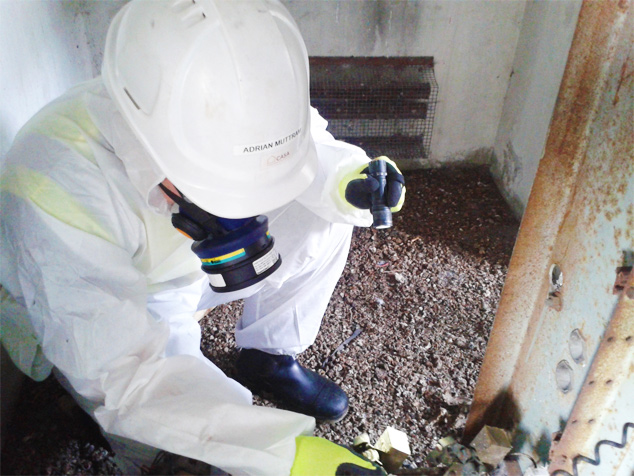
In the realm of property management, home improvement, and industrial safety, the term ‘asbestos’ looms ominously. With its well-documented health risks, asbestos has transformed from a lauded fire-retardant miracle mineral to a symbol of hidden household hazards. This comprehensive guide will demystify the process of asbestos testing, shedding light on the intricate procedures involved in identifying and dealing with this silent threat.
Understanding asbestos is paramount for homeowners, contractors, and anyone involved in the handling or maintenance of buildings. It’s crucial to recognize that asbestos is not inherently dangerous when left undisturbed, but becomes a potential health risk when its fibers are released into the air and inhaled. With this in mind, reliable testing becomes the linchpin of asbestos management.
Identifying the Presence of Asbestos
The first stage in handling asbestos is to ascertain its presence. This involves visual inspection and the collection of material samples, a task best left to certified asbestos inspectors. Here’s how the process entails.
Visual Inspection
A certified inspector will conduct a meticulous examination of the property, identifying potential asbestos-containing materials (ACMs). These include textured coatings, thermal systems insulation, and resilient floor coverings, among others. The condition and location of ACMs are also assessed, as their integrity greatly influences the risk posed.
Sampling Techniques
Once potential ACMs are identified, the next step is to collect samples for analysis. This involves delicate procedures to avoid releasing asbestos fibers into the air. It’s essential that samplers wear personal protective equipment (PPE) and take necessary precautions to contain the area.
Samples are usually collected in controlled environments using the following methods:
- Bulk Sampling: A piece of material suspected to contain asbestos is carefully removed and placed in a sealed container for analysis.
- Surface Sampling: When removing a chunk is not feasible, a sticky or water-based adhesive is used to collect fibers from material surfaces.
- Air Sampling: This method is used to measure airborne asbestos concentrations using specialized pumps and filters, typically in workspaces undergoing asbestos abatement or disturbance.
Laboratory Analysis
The collected samples are then sent to accredited laboratories, where sophisticated testing techniques are employed to determine asbestos content. There are various methods used to identify asbestos minerals, such as:
- Polarized Light Microscopy (PLM): The most common technique, PLM uses a microscope to analyze the structure and optical properties of fibers.
- Transmission Electron Microscopy (TEM): A high-resolution technique that can identify even the smallest asbestos fibers at the molecular level.
- X-ray Diffraction (XRD): Providing detailed mineralogical information, XRD is used for bulk samples.
Interpreting Results
The results of asbestos testing are reported as the percentage of asbestos in the material and the type of asbestos present. It’s important to note that not all types of asbestos are regulated, but precautions should be taken regardless, as all forms pose risks.
Results interpretations involve:
- Asbestos Type: The most common types are chrysotile, amosite, and crocidolite, with chrysotile being the most prevalent.
- Material Condition: This factor influences the likelihood of fibers being released.
- Intended Use: The intended function of the tested material may significantly impact potential exposure and need for abatement.
Post-Testing Protocols
Upon receipt of the results, affected individuals must develop an appropriate response strategy. This could involve:
- Abatement: Complete removal of material is the most effective method to eliminate health risks, performed by licensed asbestos contractors.
- Encapsulation: In some cases, encapsulation with a sealant may safely contain the asbestos, preventing fiber release.
- Ongoing Monitoring: Regular inspections and air sampling are essential to monitor the integrity of ACMs and to verify the efficacy of abatement methods.
Looking Forward Safely
The invisible nature of asbestos makes its management a complex process. By understanding the thoroughness of asbestos testing procedures, stakeholders can take proactive steps to ensure the safety of building occupants and workers. It’s a shared responsibility to handle asbestos with the respect and caution it demands. In doing so, we contribute to a safer, asbestos-aware environment that protects our health and ensures the integrity of our living spaces.




